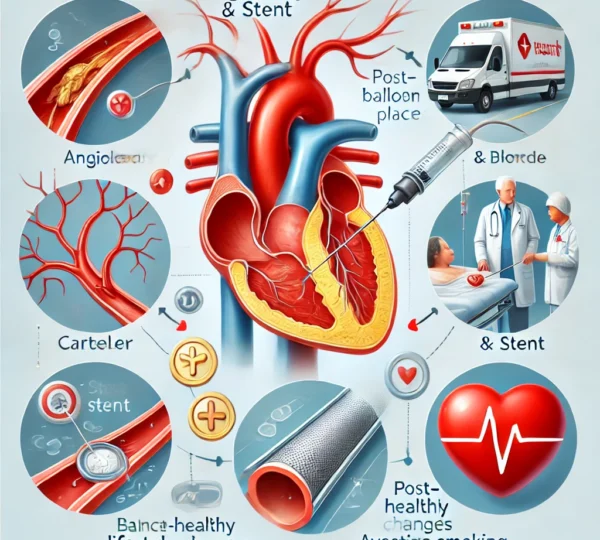Angioplasty and Stents: Procedures to Improve Heart Health
Angioplasty and stents are common procedures used to treat narrowed or blocked arteries. These treatments are especially important for people with heart disease or peripheral artery disease (PAD).
Instead of open-heart surgery, these minimally invasive procedures provide a safer and quicker way to improve blood flow and prevent severe complications like heart attacks or strokes.
How Angioplasty Works:
Angioplasty is a procedure that involves inserting a catheter into the affected artery. The doctor threads the catheter through the artery to the blockage. Once in place, a balloon at the end of the catheter inflates, pushing the blockage aside and opening the artery. Often, doctors will place a stent, a small mesh tube, inside the artery to keep it open and ensure proper blood flow.
Common Symptoms of Blocked Arteries:
The symptoms of narrowed or blocked arteries can vary depending on which artery is affected. However, some common symptoms include:
- Chest pain: Often experienced as pressure or tightness in the chest.
- Shortness of breath: Difficulty breathing, especially with physical activity.
- Fatigue: Feeling unusually tired or weak.
- Numbness or tingling: This can occur in the arms or legs, signaling restricted blood flow.
- Leg pain while walking: Known as claudication, this pain often subsides with rest.
Diagnosing Blocked Arteries:
To diagnose whether angioplasty and stents are necessary, doctors perform a cardiac catheterization. In this procedure, they insert a catheter through an artery, typically in the arm or leg, and guide it to the heart. This allows them to see the extent of the blockage and evaluate the blood flow in the arteries.
When to Consider Angioplasty and Stents:
Doctors typically recommend angioplasty and stents when patients experience symptoms of blocked arteries. These procedures are also preventative measures that can reduce the risk of heart attacks or strokes. If you have narrowed arteries but are not yet experiencing symptoms, your doctor may still recommend angioplasty as a preventive treatment.
Recovery After Angioplasty:
One of the benefits of angioplasty and stent placement is that recovery time is usually brief. Many patients are able to return home the same day or within 24 hours. It is important to follow your doctor’s advice regarding lifestyle changes, medications, and physical activity to ensure full recovery and prevent future blockages.
Lifestyle Changes for Better Heart Health:
While angioplasty and stents can provide immediate relief, long-term heart health requires lifestyle changes. Eating a heart-healthy diet, engaging in regular exercise, quitting smoking, and managing stress are all crucial steps in maintaining healthy arteries.
Your doctor will guide you in making these changes to reduce the risk of further complications.
Conclusion:
Angioplasty and stents offer significant benefits by improving blood flow and preventing life-threatening conditions like heart attacks and strokes. If you experience symptoms related to narrowed arteries, it is important to consult a doctor to determine if these treatments are right for you. Remember, maintaining a healthy lifestyle is key to keeping your arteries clear and your heart strong.
For More Information Click here



